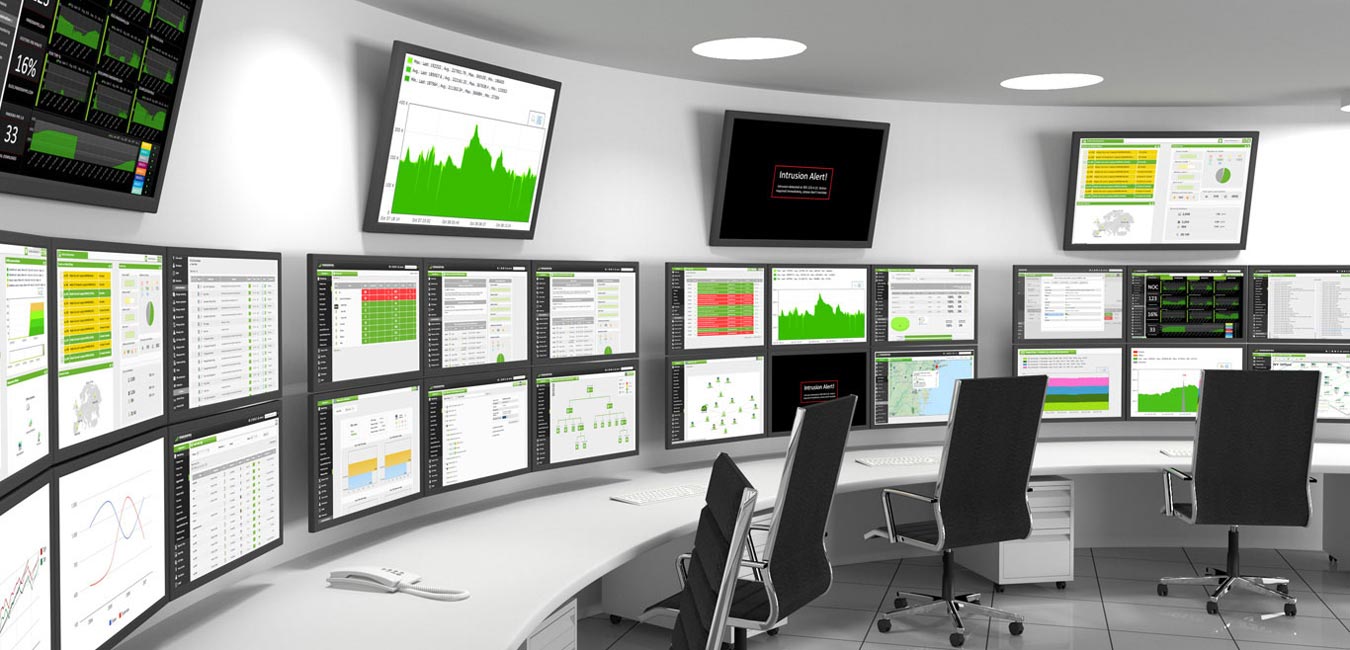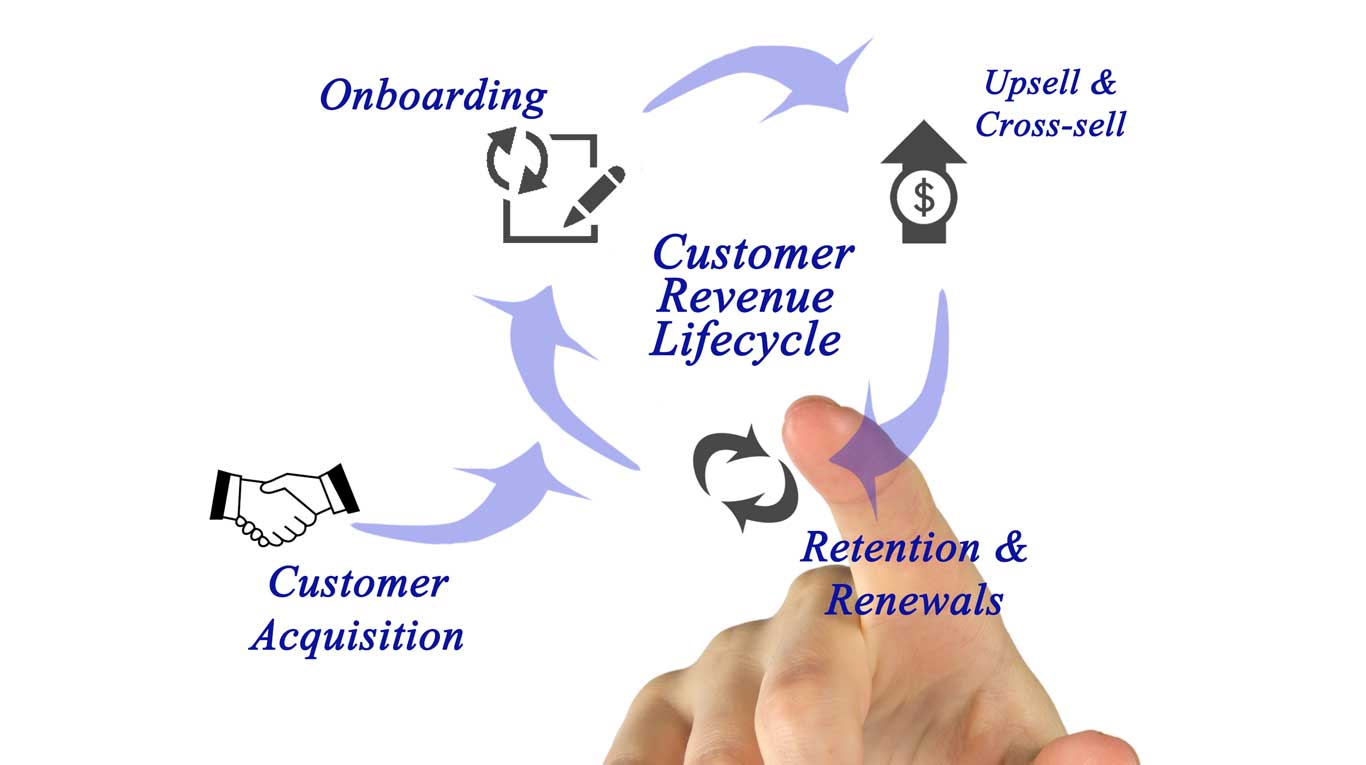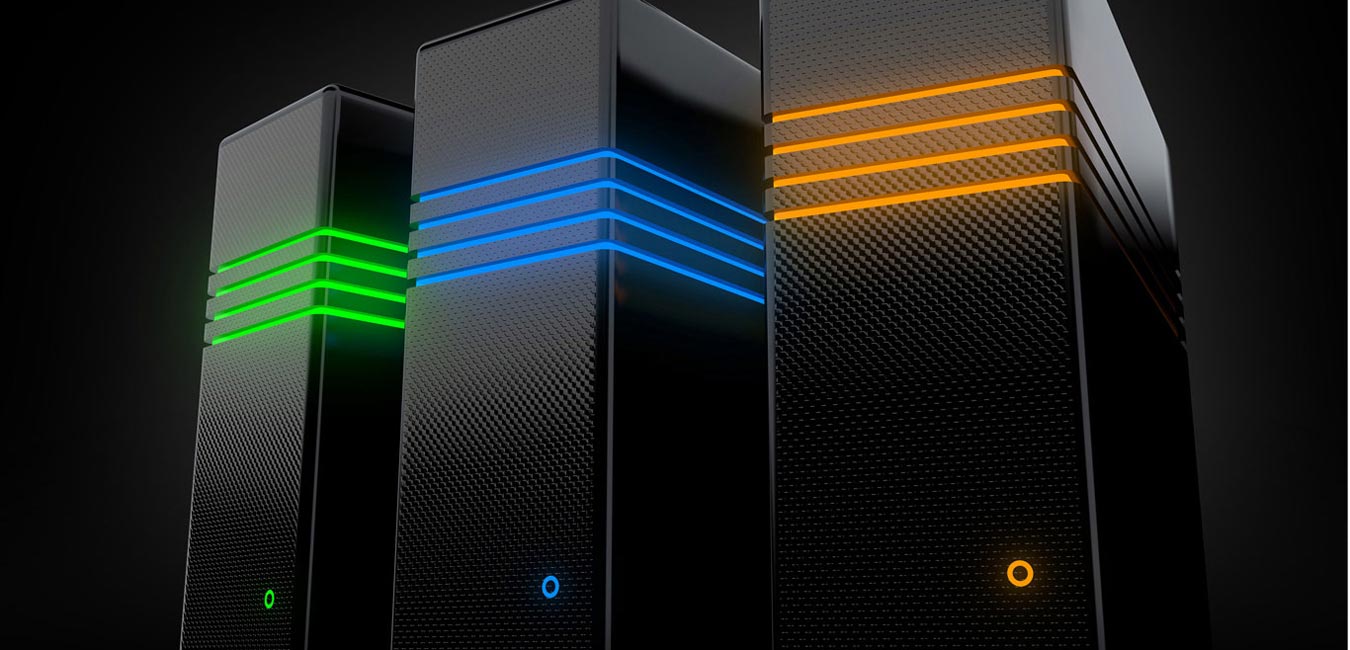Enterprise Policy Vs Technology – are your people the biggest security risk?
According to a study by Intel in September 2015, almost 43 % of all data breaches were due to insider breaches (half being intentional). Threats perpetuated by disgruntled employees form an overwhelming number in these, especially in the Asia pacific region, where it is the second largest cause of all security breaches.
But despite such staggering figures, very few organisations or IT employees take the insider threat seriously- as low as 20% in the US market. A recent report by Ponemon says that in 2015, while insider attacks weren’t the biggest cause of security breaches, they caused the most damage- about USD 144,000 per instance!
Why?
Globally, very few organisations seem to have a clearly written policy that ensures employee education or affirmation about maintaining security of organisation data. If nothing else, it would help in increasing awareness of what might be dangerous, and lay down the processes for the right way of handling sensitive data!
One of the things this policy needs to define is regulate the privileges that trusted operators have- because they most often have the opportunity to cause most damage. Since they have the privilege to perform any process on critical systems using critical data, they could also, inadvertently or deliberately, be the biggest threat!
Most organisations confuse trust with granting unauthorised access to data for any employee and that has cost many companies dear! A balance between empowering an employee, and access control needs to be in place. In a vast majority of cases the unauthorised access comes from inadvertent sharing or passwords or access to critical data. What’s needed is a strict control on access. But that’s where the challenge lies- overlapping roles and inconsistent entitlements. But even more than that, is the poor governance process that keeps the backdoors open for security policy enforcement. The reason is, very often, that most organisations themselves are unaware of where their critical information is stored. It then becomes difficult to prevent inappropriate transmittal or access in the first place! And in most cases, a company’s reaction to a breach is reactive. There is hardly any attempt for predictive responses. There is almost never any system or policy in place to identify at risk accesses or individuals, so an attack may be pre-emptive or predicted.
Any policy that is to regulate data access to insider threats needs to follow some definitive guidelines. Some permissions and capabilities of employees need to be clearly regulated. These could be:
Data Classification
In order to be able to protect critical data, it first needs to be classified as critical. Understanding the consequences of a leak, an organisation needs to classify information at various levels of criticality and then work on ensuring the various security policies that confirm to each level of protection it needs. The data could include customer data, financial or market data or systems information. Each of these will have a cost attached, and access policies need to be in place for all. In addition, the security algorithms need to be clear on who can access to what levels- read, delete, copy or use in any other manner.
Privileged Identity and Passwords Management policy- a Must
In most organisations, the security and IT admin teams have access to almost all data, but with passwords. In some orgs, leadership and stakeholders are also given access. Such privileges need to be monitored by technology tools as well as policy enforcements. Who gets to see and do what, or Privileged Identity Management, has to be clear and simple but non-compromisable. It should enable regulation of multiple accesses to critical data.
Often many leadership level stakeholders share passwords and authorisations that could compromise key data or systems of a company. A policy that lays down the terms of clear privileged Identity Management can control the risks associated with this multiple usage of passwords and thus, the risk.
RBAC
In most organisations, privileges accesses are all or nothing accesses, often allowing more privileges than a person needs. A regulatory policy should be able to change that, and reduce the unnecessary risk to key data and systems information. Policies governing user entitlements need to be a strict enforcement in every organisation.
Fraudulent Access Identification
In cases where an outsider exploits an insider to access data, the advanced authentication methods should be put in use. These would go beyond passwords, and into the contextual factors. Fraudulent access can be identified by simple ways- time zones- a person logging in from another place within minutes of logging from one- or some security questions answered wrongly- anything could trigger alarm bells and even identify a fraud authentication try. But these also need to be a part of the policy process.
Virtualisation Risks – Need of Security
With innovative technologies like virtualisation, the risks of insider leaks have increased- another layer of administrators for the hypervisor. With the ability of the tool to replicate or transmit data at a single click- the risks have gone up manifold. The solution usually is to embed traditional security apps in the hypervisor layer as well, but the entire virtual infrastructure too, needs to be secured. The security policy needs to have an option for emerging technologies and the risk they pose.
Summary
So, to control the problem of unauthorised access, there needs to be a strict security paradigm with automated processes that meet compliance audits and identity security policies. What’s critical here is the tighter incidence management timelines- that deliver a timely and stronger role based security foundation.
Data Centers 2.0 – What to Expect and What to Plan For
With enterprise rapidly becoming virtual – by way of the cloud and connecting with IoT, physical servers for Data Centers are on their way out. Whatever the storage capabilities, it is just not going to work for the enterprise of today, and definitely not for tomorrow. What then is the face of Data Centers 2.0?
The cloud has all but taken over the storage scenario if Gartner’s figures are to be believed. In fact, in India, the revenue from cloud services has been projected at 33.2% between 2012 and 2017. So essentially, the cloud expenditure will grow at a higher rate than IT budgets in most organisations. Given this reality, and coupled with the rapid adoption and growth of virtualisation as an enterprise technology, the future of Data Centers is going to be vastly different from its present avatar.
Businesses are demanding a change. Virtualization is the enabling technology for a whole new wave of IT innovation. In addition to the technological prerogative, virtualisation is a technology that will drive efficiency and speed in enterprise in more ways than one, the primary one being business advantage. There will be soon no reason why any company would entertain the monolithic hardware based Data Centers that grab higher slice of the IT budget pie in just keeping it efficient and well managed.
The most obvious way the change will happen is the transformation from everything hardware to everything on a software platform. Beyond storage, even the Data Center networks! So SDDC is the way forward, definitely. According to a study by MarketsandMarkets, the market for Software Defined Data Centers will be growing at a rate of 28.8% every year between 2015 and 2020, from USD 21.78 billion in 2015, touching USD 78 Billion in 2020. With the irresistible benefits of reduced IT infra cost that the automation provides, and the resultant efficiency of market response, SDDC is definitely the hero of the still evolving Data Center industry.
With software enabled systems, a multi layered control is the next easy step. A centralised Data Center management console is now a reality and this also allows the analytics and big data processes to get more space, visibility and hence, strategic leverage. These layers can control almost everything – from users, space, virtual machines and even manage policies. With higher visibility into every single aspect of the data that can be drawn, and more efficient process control, this will certainly be a part of the Data Center of the near future.
With software essentially taking over Data Centers, they will be completely infrastructure agnostic very soon. There will be very little consideration of which hypervisor, servers or platform is being used, since the layered management tools will make it so easy for administrators to scale and work on powerful platforms, in a much more fluid and seamless fashion. The Data Center of tomorrow will take ease of management to hitherto unknown levels. In the same flow, Data Center automation will ensure better workflow management and optimal efficiency management as well. Robotics will almost certainly be utilised to a greater extent in efficiently managing Data Centers of tomorrow. Many known brands are already developing smaller robots that will help in identifying the energy patterns and their efficacy in Data Centers, and this will only get better over the next few years as Robotics becomes a more enterprise oriented technology.
However, just acquiring a Software Defined Data Center may not be the end of enterprise planning; there are certain things to watch out for, while taking up this innovative plan. Firstly, SDDC is not an enterprise reality yet, and only those organisations that have a certain maturity levels in terms of I&O engineering, are best off installing it.
Secondly, and more importantly, adoption of a software defined Data Center should come from a business need for higher agility and scalability. The underlying technology and skill requirements will not be viable if this is a purely technology initiative. In any case, this is not an off the shelf product and any enterprise planning to install has to do its own due diligence. A SDDC initiative would need that the organizations identify a suitable vendor to do the job, and do it well. Then, there are discussions around the various components of the Data Center – which may not all come from the same vendor- hence the issue of integration and seamless interoperability will arise.
Till it becomes commonplace technology, the stakeholders need to work on various commercial aspects of the transaction – software lock- in will be a big issue for this particular decision, and could play a very strategic role in the financial planning.
All said, the SDDC will replace your Data Center eventually, over the next two to three years, but it may not be the smartest choice for every enterprise right away. However, enterprises need to be prepared for the change when it comes- because then it will be too late to start preparedness and planning.
How Data Centers Can be Big Savers for Enterprise
Growth is about getting the right solution along with the right support at the right point in your revenue plan. The journey to higher growth needs to be supported by cost efficiencies and a well designed, well supported Data Center with fastest response times could be your biggest ally in this journey!
Over the next three years, all mobile data will double, and all forms of global IT traffic will quadruple. Your servers and even your cloud will not be able to keep pace with the data deluge that is on its way! What then, is your solution to meet this new business paradigm halfway… and still grow?
In a study conducted by Ponemon Institute in 2013, a one minute Data Center downtime can cost an enterprise up to $7,900. This was a 41% increase from 2010 costs, and if we maintain the same growth rate, 2016 will post huge downtime losses!
As your enterprise grows, it will bring forth the need for increased storage, sometimes also the imperative of virtualizing it. While this is a cost, an optimised and well integrated Data Center can actually be your best answer. It can smoothen the operations, increasing productivity and hence profitability, helping minimize TCO and maximize ROI for the enterprise. It also offers a seamless change in technology adoption to aid new processes and better business processing. This is your best path to improving agility, resilience, security and also meet compliance standards.
So, faster growth projections will need Data Centers that allow storage and computing power with much better and faster performance, much lower downtime and at much lesser cooling costs (while inflicting lower damage to the environment). There can be no compromise on storage technologies, since an unscheduled down time in a Data Center can translate into big losses. Ensuring minimal or zero down time means higher growth and profits!
A study by IDC says 2017 will see 8.6 million Data Centers globally, and the burden of maintaining these in fighting condition will fall on your Data Center services provider. So the choice has to be a wise one.
In order that costs and uptime can both be contained intelligently, there are some ways to plan on the Data Center build, virtualization and networking.
The golden rule – Monitor constantly – whether it is the energy consumption, the equipment and servers or the security threats- keep a constant watch on the Data Center. There is efficient software available that ensures a smooth functioning and setup, use it.
The Data Center is not merely a cluster of well oiled servers, upgraded to a virtualised bunch of servers on the cloud (perhaps). While most companies see it is an investment, from a bottom-line perspective, its real value manifests only when it is viewed more strategically. Disruptive innovations and game changing Data Center technologies like virtualization, convergence and cloud mobility can impact the business strategy and drive growth as well as profits. The agility and faster delivery of data and other business operations that these technologies ensure, provides IT a strategic weapon to push business growth. CIOs need to just change their view of Data Center investments-from dead CAPEX to dynamic OPEX.
Globally, companies have leveraged their Data Centers to grow their business by upgrading, unifying and virtualizing them. Adding to their speed to market, these companies have managed to launch newer and better products faster, thus capturing a bigger share of the market. The ability to expand customer base, leverage analytics and generate strategic insights from the data critically adds to the growth paradigm. Making money, here, is about increasing top lines and crunching timelines.
Ultimately the fast paced response of an efficient Data Center ensures agility that provides the best way of increasing the jingle on the till. A well organised, upgraded and well maintained Data Center is thus foundation for this sweet sound of money rolling in.
Investing a stringent IT budget in upgrades of Data Center or Transforming them may just be the smartest decision a CIO will take today. With business scenarios never being more competitive, this could be the best chance at market differentiation, business transformation and hence, growth in revenues and market shares.
3 Ways You Can Save Costs on Networking Decisions!
The efficiency of your organisation today depends on the ability to allow employees to access information anywhere, anytime and from any device in real time. It wouldn’t be wrong to say that a stable, robust and agile network infrastructure base is the strongest foundation to achieve scale for enterprise with strong business model.
Today, information is power and business dynamics demands availability of information round the clock. CXOs and IT managers today simply cannot escape the burden of cost optimisation, and technology is a major cost. IT expenditures are driven by ROI and IT leaders find the walk on the edge of utility vs costs, a sharp blade to negotiate on. Efficiency (cost and operational) then usually becomes the deciding factor in the networking technology strategy.
With the right technologies and platform in place, it may even be possible to tilt the balance on the side of cost optimisation, without compromising on efficiency or security.
Here are 3 ways smart networking can help you save costs …
1. Deploy an intelligent network with automation capabilities
It’s a big investment, so ask the relevant questions and make prudent choices. You need a network platform that not only provides basic connectivity but also the base for next generation applications that allow innovative add-ons. Investments in a network deployment that can be automated, has intuitive abilities and can be relied upon to be secure and agile – ensure maximum RoI. While analysing the TCO of a network platform, also consider the costs of support, energy, and product life. Ensuring these do not become ambiguous issues later on, helps to save costs upfront. Then, it’s time to look into the actual business benefits. These could cover the absence of (or minimal) downtime, productivity enhancement such as network uptime, user productivity, and security. These, is handled judiciously, will ensure optimal costs savings.
While selecting a networking technology, make sure it assures:
- Adaptive network architecture – To accommodate new emerging applications as demand persists.
- Open, Scalable and software driven architecture to meet the need of today & future.
- Reduced power consumption – By device itself to operate and cooling requirement.
- Visibility through management platform to reduce man-hour spent during critical time.
2. Minimise complexity of vendor management
Smart Moves for a more cost effective network infrastructure:
- Understand – there is a paradigm shift globally, in networking infrastructure technologies and usage – the world is looking at Green network branches- so plan for virtualised, converged networks that are completely SLA driven and easier to manage
- A scalable and simpler network architecture could simplify your operations considerably AND save costs
- A SOA could help improve user experience
Opting for a single vendor network infrastructure has its advantages, the biggest one being cost optimisation it offers! A single line service, a singular helpdesk and a single point of contact for support, should be your objective. While juggling various products to get a network infrastructure in place may initially look like it saves some of your budget, in the long run, that will not be the case.
A composite vendor environment demands a skilled manager, and that is in itself a cost. Allowing a single vendor to take care of your end to end network integration saves that cost, as well as squarely places the onus of zero downtime on the vendor. This means resources and complexity saved at your end, leaving your skilled resources to attend to more significant operations – like the growth of your business!
3. Monitor your network
Network monitoring is every bit as critical as the network itself. In fact, not monitoring the network is the single biggest mistake enterprises make, which makes them vulnerable to all sorts of risks- security, downtime and even excessive energy usage- all definitive extra and huge costs. Enterprises ignorant of what links are down and what points are vulnerable, are completely exposed to all sorts of risks. Real time analysis and monitoring of the network is a must to detect any anomalies. Each of the network applications should be trained to identify anything amiss- by way of predictive and pre-emptive analysis.
Of course, the biggest beneficiary of real time network monitoring will be security assessment. Given that security breach could also trigger the biggest losses, the investment in a monitoring app is certainly worth every bit. Of course, the key here is proactive monitoring and immediate action on an anomaly, without waiting for it to mushroom into a threat.
However, monitoring need not be a huge and excessive expenditure. The whole operation of purchasing, maintaining and integrating costly paraphernalia for network monitoring will defeat the purpose. So, for optimal monitoring at minimum costs, it may be smart if the network team develops the base requirement for visibility and troubleshooting during the instances of upgrades or new installation of networks. This will prevent downtime, and yet ensure constant monitoring tools are up and running- saving incident costs.
There has been tremendous innovation in networking technologies, including software defined networking (SDN), network function virtualization (NFV), overlay networks, open API’s, cloud management, orchestration, analytics and more. These innovations have great promise to improve operational efficiency and enable digital applications. However, the real life challenge of adopting new technologies has resulted in a slow adoption of these innovations.
What the CIOs need to do is draw an architecture that integrates the critical innovations in networking (that includes these technologies) in their roadmap for new features. This will not only help to improve process and productivity within the organisation but also reduce operational cost to manage infrastructure and ensure that it is adaptable to meet demands of new applications roll out.
Ensure Lower Opex with Data Center Monitoring
Data Centers are the backbone of today’s IT world. Growing business, demand that the Data Centers operate at maximum efficiency. However, building Data Centers, maintaining and running them involves a lot of operational expenses for the company. It is important for companies to look for options that can help them lower Opex for their Data Centers. Proper capacity Planning, advanced monitoring techniques, and predictive analysis can help companies to achieve these goals and help improve business growth. Real-time monitoring helps Data Center operators to improve agility and efficiency of their Data Centers and achieve high performance at a lower cost.
Today’s digital world requires constant connectivity, which in turn requires all time availability. But there could be several things that could cause outages – like overloaded circuit chip, air conditioner unit malfunction, overheating of unmonitored servers, failure of UPS (uninterrupted power supply) and power surge. So how do we ensure availability? Implementing DCIM (Data Center Infrastructure Management) technologies can help you improve reliability. DCIM systems monitor power and environmental conditions within the Data Center. It helps in building and maintaining databases, facilitate capacity planning and assist with change management. Real-time monitoring helps improve availability and lower Opex.
Servers and electronic devices installed in Data Centers generate a lot of heat. Overheated devices are more likely to fail. Hence, Data Centers are usually kept at temperatures similar to refrigerators. Thus most of the power in a Data Center is consumed for cooling purpose. There are various techniques and technologies that Data Center operators can implement to save energy. Recent strategies like free cooling and chiller-free Data Centers, expand the allowable temperature and humidity ranges for Data Center device operations. Implementing these strategies help save energy costs. A telecommunication giant Century Link had an electricity bill of over $80 million in 2011 which made them think of a solution to lower this cost. CenturyLink implemented a monitoring program. With this monitoring program, their engineers were able to safely raise the supply air temperatures without compromising availability and with this solution CenturyLink was able to save $2.9 million annually.
As per ASHRAE (American Society of Heating, Refrigeration and Air Conditioning Engineers) new guidelines, the strategies like free cooling and chiller-free Data Centers can offer substantial savings and one might expect Data Center operators would make use of these seemingly straight forward adjustments. However, as per a survey, many Data Center operators are not yet following these techniques and average server supply air temperature for the Data Center is far cooler than ASHRAE recommendations.
Most of the Data Centers are provisioned for peak loads that may occur only a few times in a year. Server utilization in most of the Data Centers is only 12-18% or may peak at 20%. However, these servers are plugged in 24x7x365. In summary, though the servers are idle they are drawing the same amount of power that other operational servers are drawing. Power distribution and backup equipment implemented in Data Centers also cause substantial energy waste. Similar to cooling strategies, most of the owners employ alternate strategies to improve power efficiency. However, most of them are on the computer side. Increasing density of the IT load per rack, with the help of server consolidation and virtualization, can offer substantial savings, not only in equipment but also in electricity and space. This is an important consideration when a Data Center is located in constrained energy supply or electricity situation in the context of high real estate prices, as in most of the urban areas.
Increasing density leads to concentrated thermal output and needs modified power requirements. The effective way to maintain continuous availability in high-density deployments is real-time monitoring and granular control of the physical infrastructure. Power proportional computing or matching power supply to compute demand is the recent innovation that few of the operators are using to improve energy efficiency. Few operators use dynamic provisioning technologies or power capping features already installed on their servers. However, raising inlet air temperatures causes the risk of equipment failure. Without an in-depth understanding of the relationship between compute demand and power dynamics, implementing power capping increases the risk of the required processing capacity not being available when required. Without real-time monitoring and management, there is a high risk of equipment failure in a Data Center.
Real-time monitoring helps businesses get critical information to manage possible risks in the Data Center. Monitoring helps improve efficiency and decrease costs, enabling businesses to have availability and saving. They can lower Opex and still maintain high availability.
With the help of Real-time monitoring, a small issue can be spotted, before it becomes a large problem. In a smart Data Center, several thousands of sensors across the facility collect the information regarding air pressure, humidity, temperature, power usage, utilization, fan speed and much more – all in real time. All this information is then aggregated, normalized and reported in a specified format to operators. This allows operators to understand and adjust controls in response to the conditions – to avoid failures and maintain availability.
Monitoring has lot many benefits. Monitoring data can be used by cloud and hosting providers to document their compliance with the service level agreements. Monitoring data allows operators to automate and optimize control of physical infrastructure. Real-time monitoring gives visibility at a macro and micro level, for businesses to improve client confidence, increase Data Center availability, energy efficiency, productivity and at the same time reduce their operational expenditures by optimizing Data Centers with the help of monitoring data.
Embracing the Software-defined Data Center
With the Data Centers becoming more crucial to meeting the business requirements of organizations, older technologies are lagging behind. That’s why the savvy business professionals are embracing the software-defined Data Centers that extend the advantages of automation and orchestration, simplify management and provide a more business-focused approach.
Take baby steps
Designing software-defined environments often implicates re-evaluating business processes and operations model, ranging from automation and orchestration to service activation and user experience. It is often suggested that companies have to transform the whole Data Center operations, which seems daunting but in fact, is not necessary at all. You can simply begin your journey in the SDDC environment with small steps by starting projects that are associated with low-key services that address only one aspect – networking, computing or storage. If you start small with projects that are not mission-critical, your IT gets an opportunity to adapt and filter processes for the next project, hence shaping SDDC expertise without exposure to any business risk.
Skilled IT team is vital
In SDDC, it is imperative that the IT team has the capability of comprehending the automation and orchestration of systems. The technologies in a software-defined Data Center are generally vendor specific. It is crucial for businesses to choose platforms that can be conveniently and skillfully managed by the IT team. It is always better to consider in-house expertise rather than modifying the team for unfamiliar technology and spending a fortune on training and support.
Consider the IT role
In the age of software-defined Data Centers, businesses don’t run IT processes in silos, as they used to earlier. Since the data is coordinated at a higher level, there is no longer a need for separate groups for networking, storage, applications and servers. SDDC offers more applicable information gathered from various components and distributes it across IT for better operations and management. Server uptime, storage efficiency and security are significant. So are the prompt IT systems upgrade and completion of task to the user’s satisfaction. In the new scenario, the role of IT will shift dramatically. IT will have to optimize and deliver services as per SDDC standards on a virtualized infrastructure.
Use metrics for the business
Agility is the top-of-the-line driver for IT and in an SDDC infrastructure, businesses can notably crop down the time to deploy, upgrade and even fine-tune a user service. Metrics are critically valuable. In an SDDC-oriented environment, businesses are able to increase the speed of diagnosing issues. This enables them to adapt quickly to real-time demand, simply by measuring request and response times between servers and clients. Further, they get the opportunity to move storage resources with zero downtime along with the ability to scale infrastructure sans the user downtime. Ease of use, user satisfaction, moving workloads easily, re-purposing infrastructure for hosting various apps and the total cost are the metrics that can showcase that your business can be more agile and efficient in software-defined Data Center.
SDN – Bringing flexibility and scale to Data Center
Today’s growing businesses need instant application deployments and deliveries at a much higher speed. While it is a major challenge for IT administrators, Software Defined Networking (SDN) has helped organizations to achieve this goal with the help of automation tools. SDN helps businesses to achieve flexibility and scalability with the platform that can efficiently handle the demanding network needs of present and future growth. SDN has made deployments of applications and business servers more speedy and agile. Cloud architectures are able to deliver automated, on demand application delivery and mobility on a scale required by SDN. SDN helps enhance the benefits of Data Center virtualization by increasing resource utilization and flexibility, thus reducing the overhead and infrastructure costs. SDN has a great contribution in converging management network and applications into an extensible and centralized orchestration platform, that can perform automation tasks of provisioning and configuring the entire infrastructure. This assists businesses in building a modern infrastructure, that can fulfil the demand of delivering new applications and services at a much faster pace than possible now.
With the legacy architectures and operating models, current Data Centers are finding it difficult to scale as per the required demands of today’s bandwidth hungry mobile data applications and consequent huge increase in traffic volume. Disaggregated virtual Data Centers and the multi-tenancy trend is creating further challenge in application deployments, delivery and provisioning. Operators need more capacity with the flexibility to allocate resources dynamically – to when and where they are needed most. Current demands need enhanced efficiency and networks that can dynamically adapt to the surroundings. The new SDN technology is the perfect solution for these problems. SDN by abstracting network elements, creates an open environment where network resources can be orchestrated to provide a fast, open, scalable and flexible network that is simple to manage. SDN solutions increase network efficiency by taking transformations from Application Layer and using that data to control network with increased application responsiveness.
SDN allows network administrators to have programmable, centralized control over the network traffic, without having actual access to physical network devices. It separates the control plane from the data plane and thus allowing external control of the network. Separation of the control plane and the data plane allows top level decisions to be made from management device with the knowledge of network, without having device centric configurations. By separating the control plane from the data plane, SDN makes the network, programmable and uses SDN controller to program switches, using industry standard protocol like OpenFlow.
Network orchestration and virtualization are the key to SDN that helps achieve flexibility. The most important goal of SDN is to implement flexible networks that can be provisioned dynamically. Network orchestration, network programmability, network virtualization and centralized control are the major factors that define SDN.
SDN and Network Orchestration
SDN is basically a mesh of technologies to control network hardware. Network devices have network operating systems which manage the internal device operations. SDN needs network operating systems to offer API that allows external software to configure the device. SDN applications use a network controller as a gateway, in order to access APIs on the devices. OpenDaylight is the most popular and widely available gateway. The consumption of the APIs offered by devices, enable the offering of end-to-end configuration services across many network devices. Orchestration can be described as the use of automation to provide services, by using applications that drive the network. Orchestration is the most important factor in Software defined network.
SDN and Network Virtualization:
IT operators are finding that network performance could be a bottleneck to deliver speed, agility and bandwidth that is required for today’s modern application. SDN and Network virtualization, along with other solutions like 10Gigabit Ethernet and Ethernet fabrics, are amongst the technologies that can efficiently address the problem of network performance and provide agility. Data Centers are required to handle more data and transactions resulting in network growth and expansions, which add significant complexity in IT provisioning and management. Network virtualization and SDN provide a solution to network architectures that they can use to design models that efficiently cater to demands of the business critical applications.
Implementing Network virtualization with SDN, IT operators can add flexibility and scalability to current network management. SDN based network virtualization decouples virtual network from the physical network. Today businesses demand quick virtual network deployments with diverse requirements and need most of the network functions to be automated. There are numerous ways network virtualization can be defined in SDN.
How SDN provide network flexibility and Scale?
Software defined networks provide flexibility to configure, secure, manage and optimize network resources using automated SDN programs. APIs offered by network systems of devices, facilitate the implementation of common network services such as routing, security, access control, multicast, bandwidth management, storage optimization, energy usage and allows policy managements. SDN provides much flexibility that allows network programming and management at a scale which traditional networks failed to provide. SDN, by decoupling Control and Data planes result in advantages such as high flexibility, programmability and a centralized network view. SDN is considered to be a solution to provide a flexible and scalable architecture. SDN offers higher opportunity for programmability, network control, automation and thus allows network operators to build highly scalable and flexible network, that quickly adaptable to changing business needs. It provides flexibility with new network capability and services that does not require to configure individual devices or does not need to wait for vendor releases. Centralized control and management of network devices improve automation and management. Centralized and automated management of network devices result in fewer configuration errors and increased network reliability and security.
SDN is the solution for future networks to become significantly intelligent, scalable and flexible. With the help of SDN, network virtualization and network orchestration, it offers network architects an opportunity to provide a truly innovative, flexible and scalable network solution, that will be more efficient and cost effective.
12 steps to successfully grow your business with existing clients
Growing your business with existing customers is the cornerstone of sustained success. It was observed among the top 5 companies in IT services, the ones which did a better job of growing existing customers, outperformed their peer group in overall business growth and profitability consistently over a 10 year period. With the initial investments in customer acquisition, building relationships & setting up infrastructure, incremental business from existing clients is significantly more profitable than winning new clients, as it requires incurring all the initial costs again. This is the reason why your cable, phone or security provider will reduce prices for you rather than have you leave for a competitor.
- Deliver the first experience well: This is the time to build relationships. Your client is getting the first experience with you at a time when exit barriers are low. The quality of this initial experience can create significant stickiness for the future. Failure can not only shut future doors for you, but also open the door for competitors. Invest overtime, effort to engage and make a success of this first experience.
- Grow first in your existing program: If the experience has been good, existing relationships are significantly easier to leverage compared to building new ones. Focus your near term growth plans on the existing area, in which you are already engaged.
- Dominate your footprint: Be the key player and the trusted partner in your current area of engagement. Fractional players are easy to dislodge. Focus, perform and grow in the technology, process, or business area in which you are already engaged. Be the partner who your client turns to and one who is integral to their success. The more critical you are to their program, the more your clients are vested in making you successful, as their success is intricately linked to yours.
- Make your client a reference: Existing clients can be great sponsors, helping you grow business in other areas within their company. To enable that, educate your referrer on what you want to sell, to whom, and why. This will let them understand your proposition and speak with conviction, should they choose to refer you. Win the confidence of your referrer first. Make him your salesman!
- Create your budgets: Budgets, especially the “run the business” areas, are constantly squeezed to free up resources for funding new initiatives. Take the lead and drive productivity in your existing area, freeing up funds for your client. While it may cannibalize your existing business, it will significantly raise your standing. It will position you as a partner who is thinking of the client’s goals and as a preferred partner for opportunities in new areas of spend.
- Upsell and drive value: The essence of upsell is to make a bigger impact on your client’s business goals. Understand the goals of your client and what makes a difference to their business. As you build that knowledge, repurpose your skills and deliverables, to deliver a bigger impact to your client’s G&O’s and business.
- Cross sell contiguously first: Your reputation and track record are most relevant in the area where you are already performing well. It will carry most weight in the adjacent process or technology streams. If you have done a great job with ERP systems, aim to extend into bespoke development or maintenance. Chances are the buyers are likely to be connected and your track record in an adjacent technology will lend credibility. It will take longer to make the leap into say BPO or infrastructure management, even if you have strong company credentials there. The buyers and the work there are very different from the applications side work in which you have a good reputation. First aim to grow contiguous to where you have demonstrated success and spread systematically.
- Engage actively and be a good listener: Engage actively with your clients. Solicit opportunities to learn about their businesses. Get feedback about your performance and standing as well as insights into new opportunities. The more you listen, the more you will learn and identify opportunities to get better and new areas to grow in.
- Ensure continuous communication: You are your best spokesperson. Regularly let your key stakeholders know what you have accomplished. Look for forums beyond your existing touch points and message to adjacent and senior levels as well. Each of them can be sponsors, buyers or influencers in the future.
- Crises are opportunities: In the course of any relationship, things may go wrong. All mature buyers understand that. What’s important is how you deal with the crisis. Be responsive, constructive, engaged and focused on resolutions and results. If anything, take on greater ownership of than you are contractually obligated to. These are great opportunities to demonstrate that you stand by your clients when the chips are down.
- Keep your eye on the ball: However successful you are with a client, that success has to be earned every day. Keep your eye on the ball and ensure that existing programs and relationships get focus and you deliver consistently.
- There is always room to grow: Even if you have a dominant share of business with your client, there are opportunities to grow. Technologies change, processes change, regulations change, markets change, M&A’s and divestments happen. Your client is an organic, living, breathing entity and change is ongoing. Each change creates new opportunities to engage and grow.
In closing…
Growing with existing clients is the secret sauce of the most successful companies. It is also the most profitable avenue for growth. To ensure success with your clients, focus on delivering to your promise and making them your references. Actively engage to understand where your client’s business priorities lie and how you can help in successful outcomes. Grow in your existing engagement first and then into contiguous areas. A track record of performance and constructive engagement opens up new avenues for growth in other parts of the business, new areas of spend, and as your client transforms their business.
Why Data Centers are Necessary for Enterprise Businesses
Data is the most critical asset of any organization and businesses are faced with the imminent challenges of managing and governing data while ensuring data compliance. Data management is critical for every company to improve business agility with up-to-date information available anywhere, anytime to the employees who need it most. There are entire ecosystems that grow perennially around Big Data and Data Analytics, which make enterprises aim for significantly critical tools to manage everyday data.
With businesses realizing the dynamism of what can be done with their data, they are moving on from their existing resources to well-equipped Data Centers to aid better data management. Data Centers have become top priority for businesses across the globe to measure up their IT infrastructure requirements. With this shift in addressing information, Data Centers have moved beyond being just an additional storage facility. Infact, they have emerged as a key business parameter. Here is why Data Centers are necessary for enterprise businesses.
Consolidated Leadership: As an enterprise business, you have to recognize the potential in terms of leading, managing and governing your organization. Therefore, you should consider the enterprise level IT infrastructure provided by a potential Data Center service that helps your enterprise with lesser makeshift in different parts of the business. This results in consolidated leadership, centralized management and a stable governance approach to help better business decision making, for the benefit of the entire enterprise.
Reduced Barriers: Enterprises have so many facets and managing each aspect of the business is quite demanding. With the common goal being the customer, every segment of the enterprise shares the same business processes, ideologies, investment plans and capital expenditures. But due to its enterprise nature, the business is often dispersed in terms of location, products and services. This results in lack of engaging the customer across various operations of the company. With an efficient Data Center solution for enterprise business, you can reduce barriers to internal operations that affect customer service. With a convenient data management and flow, managed hosting services offered by an expert provider, will help you strengthen your ability to engage the customer across your operations.
Higher Margins: Enterprises are increasingly recognizing the growing importance of a Data Center. Investing in a tactical Data Center solution will help enterprises avail scale cost, data security and service efficiencies. Data Center service providers enable enterprises to customize solutions as per local requirements without compromising on the elemental course of the core business process. With the expansion of business, enterprises have to take account of additional resources. But with Data Center solutions, you can leverage the technical resources promptly and cost-effectively. In addition, if you require fewer systems or less storage, your provider will simply reduce implementations as per requirement. It is one of the major reasons why enterprises go for vendors who offer services, with costs incurred as per their service usage.
Data Storage and Management: Data storage needs consistently increase in an enterprise and keeping pace with the requirement surge, Data Centers continue to push the horizons of tangible capacity. Innovative ways of data management and storage are being introduced by Data Centers that instigate more enterprises to branch out into the utilization of Cloud Computing. Data Centers as well as companies are focused on meeting data storage demands that integrate both cloud and physical storage capabilities. This shift in the technology is at the cusp of driving M&A activities resulting in exponential growth in data gathering and collaboration that further enhance the need for data storage.
Safety: Given the sheer amount of data accumulation and transaction in today’s competitive environment, data security has become the top priority of every enterprise business. It has become imperative for every company to put efficient systems in place that are not only updated frequently but also monitored regularly. Constant monitoring of the systems allow you to maintain its security as potential risks and attacks are detected at the earliest. That’s why enterprises rely on third party Data Center solutions with expertise and monitoring processes to identify risks and breaches within the required time frame to be able to deal with them effectively. Most vendors offer multi-tier infrastructure setup, to effectively secure valuable data of enterprises. Besides technological security of the data, vendors also emphasize on physical security of the Data Centers, ensuring surveillance, access management, intruder alarms and physical security systems. Moreover, quick recovery processes and data retrieval in shortest turnaround time are also offered in times of environmental disasters.
Better Growth Opportunities: Most enterprises are embracing Data Center solutions after understanding the crucial role data plays in the growth of their ventures. With the advancement, Data Centers bring in the business and technology realm. And enterprises are increasingly becoming aware of managing their company from the prospect of fetching more resources to utilize high potential and growth opportunities. Your business can leverage the scale, to dominate the market with the assistance of a competent Data Center service. All you need is a proficient vendor who can help you monitor and control your data with a robust infrastructure, by automating and integrating Data Center management.
5 Cool Features of the Next Generation Data Center
The relentless growth in the volume of data created every day, has compelled Data Center administrators to integrate new technologies and processes. With the global popularity of cloud computing, the role of Data Centers has extended beyond providing enough storage capacity with data security. Data Centers – optimized with various tools and services, are now transformed into strategic business assets. Here are five cool features of next generation Data Centers.
Software Defined Data Centers (SDDC)
In IT, everything is literally virtualized and delivered as a service. And the virtualization of Data Centers is the next logical step. The virtual layer is taking over in Data Centers, making them flexible, highly secure and extremely agile. Infrastructure and network, both are not just virtualized in a software defined Data Center but are delivered as a service also. Many mainstream mega-scale Data Centers are moving forward to gain edge with software-defined Data Centers.
Data Center Operating Systems (DCOS)
Data Centers have a diversified need for an extended control layer and the interconnectivity in Data Centers depend upon Data Center management. Many providers deploy Data Center operating control layers that manage resources, users and virtual machines to meet the needs of improving scalability of management infrastructure. Aiming at greater scalability, Data Centers are now better equipped for controlling various crucial components ranging from chips to cooling systems. The DCOS layer has considerably enhanced infrastructure due to its integration into every critical aspect of every Data Center.
Infrastructure Optimization with Agnostic Data Center
The next generation Data Centers will have layered management tools that can pool resources logically as per required workloads. This kind of infrastructure will only be obtained with an agnostic Data Center that lets admin to create more powerful and scalable cloud platforms. The Data Center will become much more abstract and with infrastructure optimization, vendor lockdown can be prevented. Moreover, administrators get to manage traffic influx while leveraging hardware and software optimization. In future Data Centers, what will matter is that you smoothly present resources to the management layer irrespective of the kind of hardware deployed, enabling clients to integrate with outside technologies, flawlessly.
Better Control Layers
Each Data Center hosts a diverse variety of systems. Therefore, the control layer also needs to be greatly diversified. And since the management console integrates into APIs, it can grow exponentially to keep pace with the increasing Data Center footprint. The new-age Data Centers allow API integrated management consoles to render the big data clout, manipulation and management along with allocation of resources. Furthermore, you can even vie for better multi-tenancy options and optimum cloud scaling by embracing API integrated networking technologies.
Greater Logical and Physical Automation
With the continuous enterprise popularity of cloud computing, vendors lose sleep over supplying application performance and predictability. It is not easy to achieve a fully functional, automated Data Center environment. Hence, introduction of robots in Data Centers will be one of the most basic features of next generation Data Centers. It will provision the resources more actively.

























































